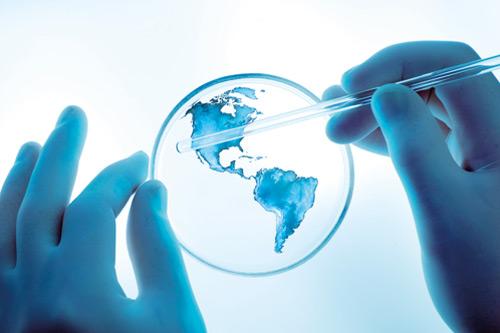The Incredible Journey of Pregnancy: A Comprehensive Guide

Pregnancy is a miraculous and transformative journey that brings about immense changes to a woman's body and life. It marks the beginning of a new chapter filled with anticipation, joy, and challenges. Whether you're a first-time parent or experienced in the realm of pregnancy, understanding the various aspects of this journey is crucial for a healthy and fulfilling experience.
This comprehensive guide covers everything you need to know about pregnancy, from conception to childbirth and beyond.
Conception and Early Signs of Pregnancy
Conception is the crucial moment when a sperm cell from a man's reproductive system fertilizes an egg cell from a woman's reproductive system, resulting in the formation of a fertilized egg or zygote. This marks the beginning of pregnancy.
The fertilized egg then undergoes a series of divisions and travels down the fallopian tube to eventually implant itself into the lining of the uterus.
Understanding the Conception Process
Conception is the fundamental biological event that marks the beginning of a pregnancy. It involves the fusion of a male sperm cell and a female egg cell, resulting in the formation of a fertilized egg or zygote.
This process typically occurs in the fallopian tube, a narrow, tube-like structure connecting the ovaries to the uterus. Here's a step-by-step explanation of the conception process:
As the embryo grows, it goes through different stages of development. By the end of the eighth week, the embryo is considered a fetus. From this point, the fetus continues to develop and grow, with organs and systems gradually forming and becoming functional.
Common Early Signs of Pregnancy
Missed Period: One of the most common signs of pregnancy is a missed menstrual period. However, some women might experience light spotting or irregular bleeding, which can be mistaken for a period. If you suspect pregnancy and have missed your period, it's advisable to take a pregnancy test.
Morning Sickness: Nausea and vomiting, often referred to as morning sickness, can occur at any time of the day. It usually starts around the sixth week of pregnancy and may persist into the second trimester.
Fatigue: Increased levels of progesterone can cause extreme fatigue and drowsiness in early pregnancy, even in the early stages of pregnancy.
Frequent Urination: Hormonal changes lead to increased blood flow to the pelvic region, resulting in increased urine production. This can lead to more frequent trips to the bathroom.
Food Aversions and Cravings: Changes in hormones can cause aversions to certain foods and cravings for others. These cravings and aversions can vary widely among pregnant women and also read how to handle craving during pregnancy.
Mood Swings: Hormonal fluctuations can also impact a woman's mood, leading to mood swings, irritability, and heightened emotions.
Increased Sensitivity to Smell: Some women experience heightened sensitivity to smells during pregnancy, which can trigger nausea and vomiting.
Implantation Bleeding: Around 6-12 days after conception, some women experience light spotting or bleeding when the fertilised egg attaches to the uterine lining.
It's important to note that these signs are not exclusive to pregnancy and can also be associated with other conditions. If a woman suspects she might be pregnant due to experiencing these signs, taking a home pregnancy test or consulting a healthcare professional for confirmation is recommended.
Additionally, each pregnancy experience is unique, and some women may experience only a few of these, while others might experience several pregnancy signs
Trimesters of Pregnancy and Fetal Development
Pregnancy is divided into three distinct phases known as trimesters, each spanning roughly three months. These trimesters are crucial periods during which the fetus undergoes significant growth and development, and the mother's body experiences various changes to accommodate the growing baby.
Understanding the changes that occur during each trimester is essential for expectant parents to navigate their pregnancy journey and ensure both maternal and fetal health.
First Trimester: Duration: Weeks 1-12
Fetal Development:
During the first few weeks, the fertilized egg undergoes rapid cell divisions and eventually becomes a blastocyst, which implants into the uterine lining.
The embryonic stage begins after implantation, and the major organs and systems start to form. By the end of the first trimester, all major organs have begun to take shape.
The fetus is about 2.5 to 3 inches long by the end of the first trimester. Facial features, limbs, and internal organs become more distinct.
Changes in the Mother's Body:
Hormonal changes cause symptoms like morning sickness, breast tenderness, fatigue, and frequent urination.
The uterus grows, and many women begin to notice a small baby bump.
Emotional changes and mood swings are common due to hormone fluctuations.
Second Trimester: Duration: Weeks 13-27
Fetal Development:
The second trimester is marked by rapid growth. The fetus gains size and weight, and its features become more refined.
Hair, nails, and eyebrows develop, and the fetus begins to practice movements like sucking and swallowing.
Gender can be determined through ultrasound, and the fetus can hear external sounds.
By the end of the second trimester, the fetus is around 14 to 16 inches long.
Changes in the Mother's Body:
Morning sickness often subsides, and energy levels may increase.
The baby bump becomes more pronounced, and the mother may start to feel fetal movements (quickening).
Skin changes, such as the appearance of a linea nigra (dark line on the abdomen) and stretch marks, may occur.
Third Trimester: Duration: Weeks 28-40+
Fetal Development:
Organs continue to mature, and the fetus's lungs and brain undergo further development.
The fetus gains more weight, and its movements may feel stronger and more noticeable.
Towards the end of the third trimester, the baby usually settles into a head-down position in preparation for birth.
Changes in the Mother's Body:
The uterus expands significantly, leading to increased discomfort and potential back pain.
Braxton Hicks contractions (practice contractions) may become more noticeable.
Shortness of breath and difficulty sleeping due to the growing uterus's pressure on the diaphragm.
Nesting instincts and heightened emotions as labor approaches.
Understanding the progression of pregnancy through trimesters helps expectant parents anticipate and prepare for the changes they and their growing baby will experience.
It's important to note that every pregnancy is unique, and while the general timeline remains consistent, individual experiences can vary.
Regular prenatal check-ups and consultations with healthcare providers are essential to monitor both maternal and fetal health and address any concerns that may arise during each trimester.
What is Prenatal Care and Why is it Important?
Prenatal care is a comprehensive healthcare regimen designed to support the health and well-being of expectant mothers and their developing babies throughout the course of pregnancy. This specialized care begins once a woman discovers she is pregnant and continues until childbirth.
Prenatal care encompasses a range of medical, nutritional, emotional, and educational services that aim to ensure a safe and healthy pregnancy journey for both the mother and the baby.
Importance of Prenatal Care
Prenatal care is a comprehensive healthcare approach designed to support and monitor the health of both the expectant mother and the developing fetus throughout the course of pregnancy. It involves regular medical check-ups, screenings, tests, and guidance provided by healthcare professionals, such as obstetricians, midwives, and nurses.
Prenatal care is of paramount importance as it ensures the well-being of both the mother and the baby, identifies potential complications early on, and promotes a healthy pregnancy journey.
Here's why prenatal care is so crucial:
Monitoring Fetal Development:
Prenatal care allows healthcare providers to closely monitor the growth and development of the fetus. Regular ultrasound scans and other tests help assess the baby's health, size, and position within the uterus.
This information is essential for detecting any developmental issues or abnormalities that may require intervention.
Advances in medical technology have given rise to a range of fetal monitoring devices that provide valuable insights into the well-being of the unborn baby.
These devices offer non-invasive means of assessing vital parameters, enabling healthcare professionals to make informed decisions based on accurate data.
Fetal monitoring devices play a pivotal role in ensuring the safety of both mother and baby during the critical stages of labor and delivery.
Early Detection of Complications:
Regular prenatal visits enable healthcare professionals to identify and manage potential pregnancy complications as soon as they arise.
Conditions such as gestational diabetes, preeclampsia, and high blood pressure can be detected through screenings, allowing for timely treatment and improved outcomes for both the mother and the baby.
Guidance on Healthy Lifestyle Choices:
Prenatal care providers offer advice on maintaining a healthy lifestyle during pregnancy. This includes recommendations for physical activity, managing stress, avoiding harmful substances (such as tobacco, alcohol, and certain medications), and ensuring proper sleep.
Eat Healthy During Pregnancy: Focus on Essential Nutritions
Paying attention to nutrition and maintaining a healthy lifestyle is crucial during pregnancy, as it directly impacts the well-being of both the mother and the developing baby.
Proper nutrition ensures that the baby receives the essential nutrients needed for growth and development, while also supporting the mother's overall health. Here are the key points related to nutrition and health during pregnancy:
Essential Nutrients for Pregnant Women:
Folic Acid: Essential for preventing birth defects in the baby's neural tube. Found in leafy greens, fortified cereals, and legumes.
Calcium: Vital for developing strong bones and teeth. Dairy products, fortified plant-based milks, and leafy greens are good sources.
Iron: Required to prevent anemia and support the increased blood volume during pregnancy. Found in red meat, poultry, beans, and fortified cereals.
Protein: Supports the baby's tissue growth. Sources include lean meats, poultry, fish, eggs, beans, and nuts.
Omega-3 Fatty Acids: Essential for brain and vision development in the baby. Found in fatty fish (like salmon), walnuts, and flaxseeds.
Vitamin D: Aids in calcium absorption and bone health. Sun exposure and fortified foods help increase vitamin D intake.
Vitamin C: Helps with wound healing and iron absorption. Citrus fruits, strawberries, and bell peppers are rich sources.
Vitamin A: Essential for vision and immune system health. Carrots, sweet potatoes, and dark leafy greens are good sources.
Foods to Avoid During Pregnancy:
High-Mercury Fish: Certain fish, like shark, swordfish, king mackerel, and tilefish, should be avoided due to high mercury content, which can harm the baby's nervous system.
Raw or Undercooked Seafood, Eggs, and Meat: To prevent foodborne illnesses, it's important to avoid consuming raw or undercooked items.
Unpasteurized Dairy and Foods: These products can carry harmful bacteria, so it's best to stick to pasteurized options.
Caffeine and Alcohol: Limit caffeine intake and avoid alcohol during pregnancy to reduce risks to the baby.
Importance of Staying Hydrated and Exercising:
Staying Hydrated: Drinking enough water is essential for maintaining amniotic fluid levels, aiding digestion, and preventing dehydration, which can lead to complications.
Exercising Safely: Regular, moderate exercise during pregnancy promotes cardiovascular health, helps manage weight gain, and can alleviate pregnancy discomforts. Activities like walking, swimming, and prenatal yoga are recommended. Always consult a healthcare provider before starting or continuing an exercise routine during pregnancy.
Pregnancy is a time when the body requires additional nutrients to support the growth and development of the baby. A balanced diet rich in essential nutrients, along with proper hydration and safe exercise, contributes to a healthy pregnancy and sets the stage for a positive birth and postpartum experience.
Pregnant women should work closely with healthcare professionals to ensure they are meeting their specific nutritional needs and engaging in appropriate physical activities.
Labor, Delivery, and Postpartum:
The process of labor, delivery, and the postpartum period is a transformative and significant phase of pregnancy, marking the culmination of the journey and the beginning of parenthood. Understanding what to expect during these stages is essential for expectant parents to prepare mentally, physically, and emotionally for the challenges and joys that lie ahead.
What to Expect During Labor and Delivery:
Onset of Labor: Labor typically starts with contractions that gradually become more regular, frequent, and intense. These contractions help dilate the cervix and move the baby down the birth canal.
Stages of Labor: Labor is divided into three stages:
First Stage: This is when contractions cause the cervix to dilate. The cervix needs to reach about 10 cm for the baby to pass through.
Second Stage: This is the pushing stage, during which the baby moves through the birth canal and is delivered.
Third Stage: After the baby is born, the placenta is delivered.
Pain Management: Labor is often associated with pain, and various pain management options are available, including natural techniques (breathing exercises, movement) and medical interventions (epidurals, pain medications).
Delivery Options: Depending on the circumstances, deliveries can happen vaginally or through a cesarean section (C-section). The method of delivery is determined by factors like the baby's position, the mother's health, and any potential complications.
Postpartum Recovery for the Mother:
Physical Recovery: After delivery, the body undergoes significant changes as it returns to its pre-pregnancy state. Uterine contractions help the uterus shrink back to its original size, and vaginal bleeding (lochia) occurs as the body sheds excess tissue and blood.
Healing from Delivery: Whether a woman has had a vaginal birth or a C-section, there is a recovery period. Vaginal birth recovery involves perineal soreness, while C-section recovery involves incision healing.
Hormonal Changes: Hormonal shifts after childbirth can lead to mood swings, baby blues, and even postpartum depression. Emotional support and communication are crucial during this time.
Newborn Care and Adjusting to Parenthood:
Baby's First Moments: After delivery, the baby's health is assessed, and basic procedures like weighing, measuring, and Apgar scoring are conducted. Skin-to-skin contact and breastfeeding are encouraged in the immediate postpartum period.
Adjusting to Parenthood: Bringing a newborn home can be both exhilarating and challenging. Sleep deprivation, feeding schedules, diaper changes, and adjusting to new routines are part of this phase.
Breastfeeding and Baby Care: For mothers who choose to breastfeed, learning proper latching techniques and understanding the baby's feeding cues are crucial. Newborn care includes diaper changes, bathing, and recognizing signs of illness.
-









Comments